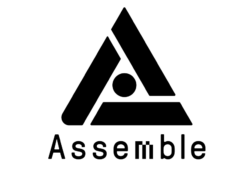
Even if one aims to keep politics out of the classroom, all education initiatives are impacted by government policies on some level. But how are politics, policies and eLearning connected? From school licensing to curriculum development to access to affordable WiFi, government policies shape eLearning. For this reason, even as the technology industry continues to drive eLearning innovations, especially in the United States, the future of eLearning will also rest on government-based policy initiatives.
To date, there appears to be a disconnect between politics, policies and eLearning. At the beginning of his second term, President Obama offered firm support for eLearning at a talk at the University of Buffalo. In the talk, he highlighted specific examples of innovative online programs. With specific callouts for Carnegie Mellon and Arizona State, Obama noted, some universities are beginning to show that online learning can assist students in the quest to master material in decreased time. But under Obama, only limited progress was made in terms of creating the conditions under which eLearning can truly flourish at both the K-12 and higher education levels.
Policies and eLearning Models
 In the United States, the vast majority of existing virtual K-12 schools are charter schools or independent schools. For this reason, states with liberal policies on charter schools generally continue to have more virtual K-12 options for learners than states with restrictions on charter schools and voucher-based education systems. In the United States, there is currently heightened debate about the suspected push toward a voucher-based education system over the coming four years. While these systems remain problematic and more long-term evidence-based research is needed to fully explore whether they can achieve comparable or broader learning outcomes than traditional public schools, there is also ample reason to conclude that introducing policies in support of a voucher-based education system would support more K-12 virtual schools and in the process expand access to eLearning across all levels of the education system.
In the United States, the vast majority of existing virtual K-12 schools are charter schools or independent schools. For this reason, states with liberal policies on charter schools generally continue to have more virtual K-12 options for learners than states with restrictions on charter schools and voucher-based education systems. In the United States, there is currently heightened debate about the suspected push toward a voucher-based education system over the coming four years. While these systems remain problematic and more long-term evidence-based research is needed to fully explore whether they can achieve comparable or broader learning outcomes than traditional public schools, there is also ample reason to conclude that introducing policies in support of a voucher-based education system would support more K-12 virtual schools and in the process expand access to eLearning across all levels of the education system.
Policies and eLearning Curricula
At least at the K-12 level, curricula continues to be heavily shaped by departments of education at the state level. This means that despite the fact that eLearning and mLearning open up new opportunities for learners, expectations about what should be taught and when persist. This is a problem because online, learners can often work at a faster pace or simply work in a different sequence. The sort of sequential learning found in most face-to-face classrooms, after all, has evolved to best meet the needs of an entire group of students (sequential learning in classrooms usually is determined based on a norm). Online, this is not necessarily needed, since eLearning expands the possibility for each student to learn at his or her own pace and in their own sequence. On a related note, students can often cover more material and more quickly online. This means that the standard state-approved curriculum may or may not be appropriate in an online classroom. At least some virtual K-12 schools are already pushing back against these norms and assumptions about when and how one’s learning should progress. At Stanford Online High School, for example, there is a recognition that age-based grades simply do not make sense in a virtual context. As the school makes clear, “Stanford OHS places students by ability rather than age or grade level.”
Access to Technology
Perhaps the most profound way in which politics, policies and eLearning converge is in terms of access to technology. Government policies have a profound impact on everything from access to information to the cost of accessing online services. Some governments–for example, the government of Estonia–have chosen to make Internet access free and accessible nearly nationwide. This means that anyone can get online virtually anytime and anywhere. In the United States, access to the Internet remains largely market driven. This means one must pay for the service and pay more for higher quality services (e.g., a faster and more reliable connection). While it seems unlikely–given what it at stake for companies like Spectra, AT&T and Verizon–that the U.S. government will ever make access entirely accessible, it is easy to imagine how this would impact eLearning. If everyone had access to fast and reliable networks, eLearning and mLearning would be able to expand at a more rapid pace.
The bottomline is that politics, policies and eLearning are closely linked. Without transforming educational and telecommunication policies, implementing eLearning at the K-12 and higher education levels will continue to struggle. The future of eLearning in the United States will depend a great deal on citizens and industry pushing for the implementation of policies that make eLearning possible across the education system.









[…] Download Plan More @ news.elearninginside.com […]
[…] Download Plan More @ news.elearninginside.com […]
[…] Download Plan More @ news.elearninginside.com […]
[…] Download Plan More @ news.elearninginside.com […]